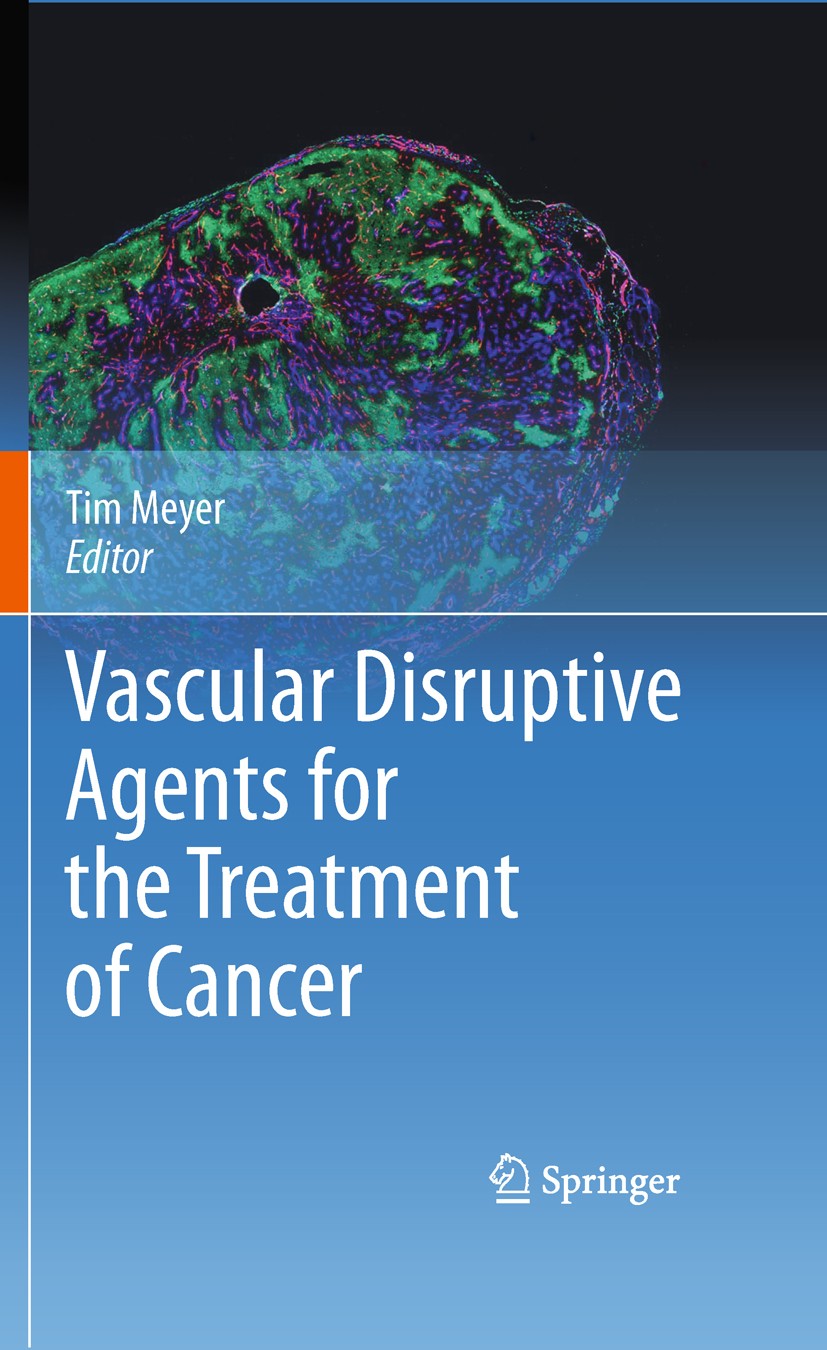| 书目名称 | Vascular Disruptive Agents for the Treatment of Cancer |
| 编辑 | Tim Meyer |
| 视频video | http://file.papertrans.cn/981/980731/980731.mp4 |
| 概述 | This book discusses preclinical target identification and validation, and the optimum pre-clinical animal models.Biomarkers and imaging modalities used to assess the efficacy of these agents are exami |
| 图书封面 |  |
| 描述 | Angiogenesis (formation of new vessels from pre-existing ones) is a crucial early event in the process of tumor development. New vessels supply the tumor with nutrients that are needed for further local growth and enable distant metastases (Folkman 1995). Judah Folkman (1971) highlighted the potential therapeutic imp- cations of tumor angiogenesis. He hypothesized that if tumor angiogenesis is inhibited, then tumor growth and metastasis will be impaired greatly or even impossible. The subsequent quest for endogenous and exogenous inhibitors of angiogenesis has yielded a variety of promising therapeutic agents that block one or more angiogenic pathways, a few of which have been approved by the FDA (e. g. , bevacizumab, sorafenib, sunitinib) for use as single agents or in combination with chemotherapy in specific populations of cancer patients (Sessa et al. 2008). There has also been a dramatic expansion in the exploration of novel anti-angiogenic agents pre-clinically and in clinical trials (Ferrara 2002). Some of the most promising data comes from the development of agents that inhibit one of the key growth factors involved in tumor angiogenesis – vascular endothelial growth factor |
| 出版日期 | Book 2010 |
| 关键词 | CT; angiogenesis; cancer; cancer therapy; cell; cell death; chemotherapy; computed tomography (CT); imaging; |
| 版次 | 1 |
| doi | https://doi.org/10.1007/978-1-4419-6609-4 |
| isbn_softcover | 978-1-4899-8226-1 |
| isbn_ebook | 978-1-4419-6609-4 |
| copyright | Springer Science+Business Media, LLC 2010 |
 |Archiver|手机版|小黑屋|
派博传思国际
( 京公网安备110108008328)
GMT+8, 2025-12-27 18:05
|Archiver|手机版|小黑屋|
派博传思国际
( 京公网安备110108008328)
GMT+8, 2025-12-27 18:05


